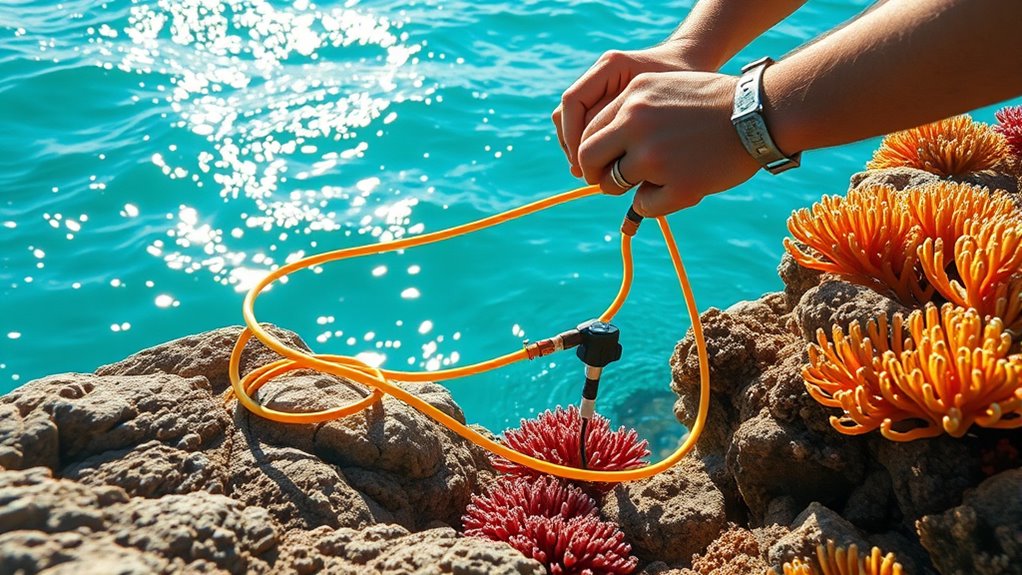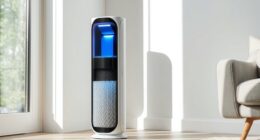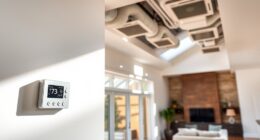Calibrating ORP sensors in sun-drenched edges can be tricky because sunlight and environmental factors affect both the measurements and the sensor’s lifespan. Exposure can cause electrode drift, false readings, and faster degradation. To get accurate results, you need proper calibration with fresh standards, protection from UV damage, and consistent measurement routines. Keep exploring to uncover how you can optimize your calibration process and ensure reliable water quality monitoring in sunny environments.
Key Takeaways
- Sunlight can cause electrode drift and false readings, requiring calibration adjustments for accurate ORP measurements.
- Regular calibration with fresh standards compensates for environmental influences like UV exposure and temperature changes.
- Using UV-resistant, waterproof housings protects sensors from sunlight degradation, ensuring consistent performance.
- Temperature compensation features in sensors help mitigate errors caused by fluctuating environmental conditions.
- Proper cleaning and routine maintenance prevent biofouling and ensure calibration accuracy in sun-drenched, exposed areas.
Understanding the Fundamentals of ORP Sensors
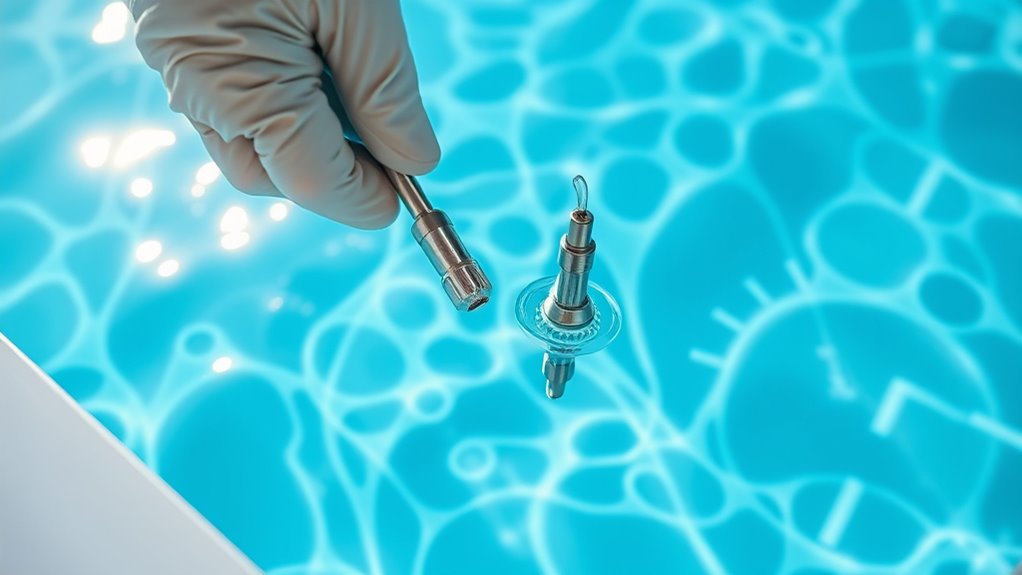
Understanding the fundamentals of ORP sensors is essential if you want to accurately measure the oxidation-reduction potential in water systems. These sensors work by detecting the electrical potential between a measuring electrode and a reference electrode immersed in water. When the water’s oxidation-reduction potential changes, it shifts the voltage read by the sensor. You should know that ORP readings reflect the water’s ability to either gain or lose electrons, indicating its chemical stability or contamination. The sensors are typically composed of a noble metal electrode, like platinum or gold, which facilitates electron transfer. To get reliable results, you need to guarantee proper sensor maintenance, understand calibration requirements, and be aware of environmental influences that might affect the sensor’s accuracy. Mastering these fundamentals is key to effective water quality monitoring. Additionally, awareness of automation in water treatment can help optimize sensor deployment and data analysis for better system management.
Common Misconceptions About ORP Readings in Sunlit Environments
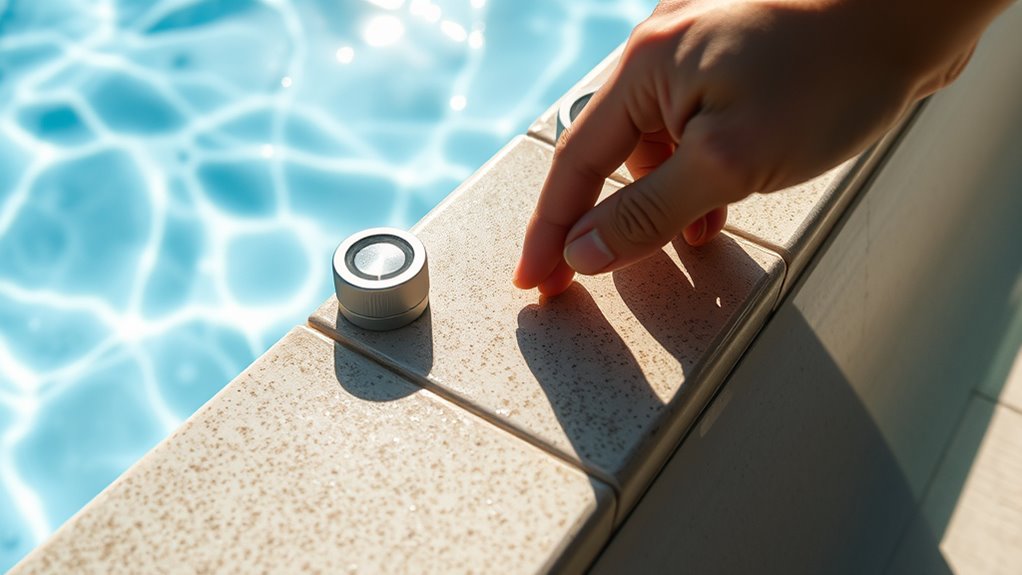
Many people assume that sunlight only affects sensor longevity, not accuracy, which isn’t true. Sunlight-induced changes can cause the sensor’s electrodes to drift or produce false positives or negatives. Ignoring these factors can result in misinterpretations of water quality, affecting decisions about treatment or safety. Recognizing that sunlight impacts ORP readings is essential. Proper handling, shielding, or calibration adjustments are necessary to ensure your measurements truly reflect water conditions, not external environmental influences. Additionally, understanding pool chemistry and environmental factors helps in managing sensor performance effectively.
The Role of Proper Calibration in Ensuring Accurate Measurements
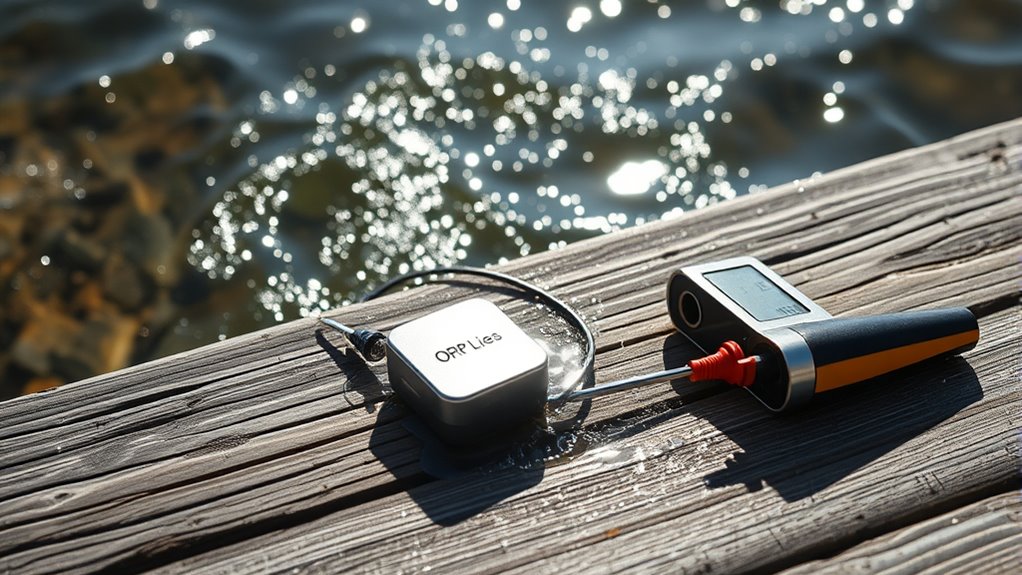
Proper calibration is essential to guarantee your sensor provides accurate and reliable measurements, especially in sunlit environments where external factors can skew readings. When you calibrate correctly, you ensure your sensor responds properly to changes in the water’s redox potential. To achieve this, keep in mind these key points:
- Regularly calibrate your sensor using standardized solutions.
- Follow manufacturer instructions precisely during calibration.
- Check calibration accuracy periodically to catch drift early.
- Record calibration data for ongoing performance tracking.
Additionally, selecting appropriate planters that minimize external influences can help maintain sensor accuracy in bright environments.
Environmental Factors That Affect ORP Sensor Performance
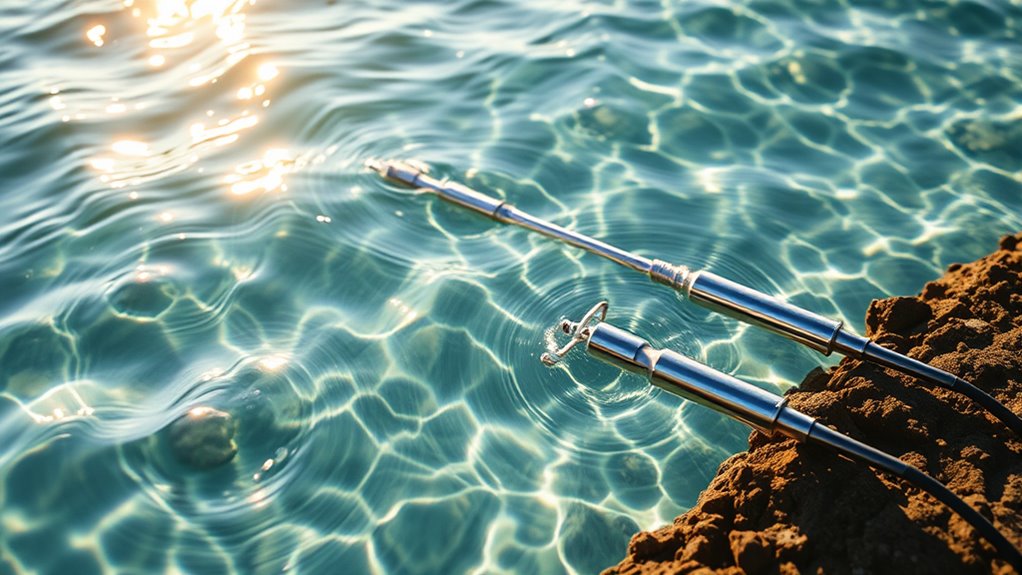
Environmental factors such as sunlight, temperature fluctuations, and water chemistry can substantially impact ORP sensor performance. Sunlight exposure causes UV degradation of sensor components, leading to inaccurate readings over time. Temperature swings accelerate chemical reactions, affecting oxidation-reduction potential measurements. Water chemistry variations, like changes in pH, salinity, or dissolved solids, alter the electrochemical environment, making sensors less dependable. For example, high dissolved oxygen levels can skew ORP values, while certain ions may interfere with the electrode’s response. These factors can cause drift and reduce sensor lifespan if unaddressed. To maintain accuracy, you must regularly monitor environmental conditions, understand local water chemistry, and account for these influences during calibration. Recognizing these factors helps you interpret ORP data more accurately and ensures reliable performance in sun-drenched, variable environments. Additionally, best heat pump practices can help mitigate some environmental impacts by maintaining consistent operational conditions.
Practical Strategies for Reliable ORP Monitoring in Drenched Edges
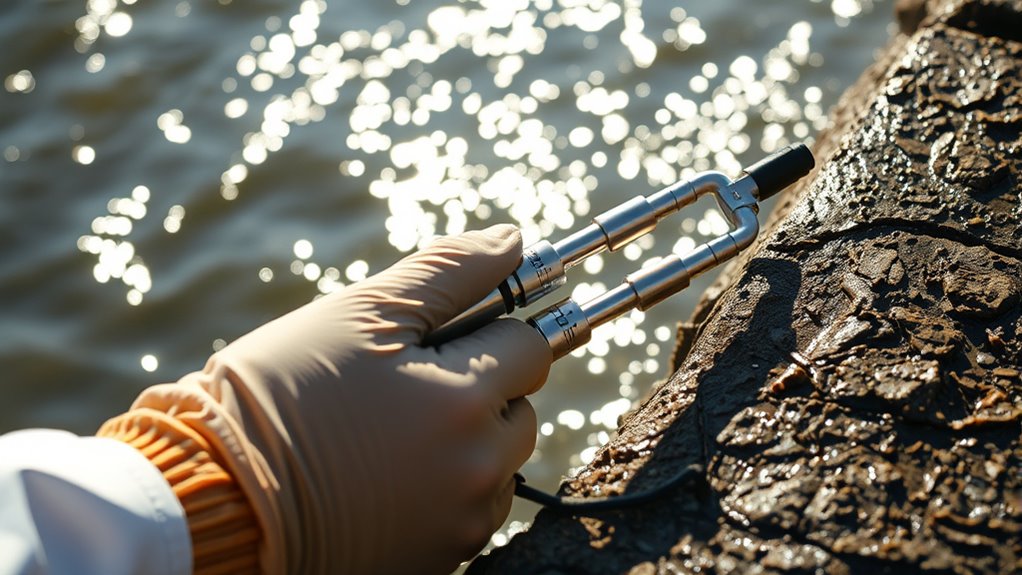
To guarantee accurate ORP measurements in drenched edges, implementing practical strategies that address common environmental challenges is essential. First, regularly calibrate your sensors with freshly prepared standards to account for environmental variability. Second, protect sensors with waterproof and UV-resistant housings to prevent damage from sunlight and moisture. Third, choose sensors with built-in temperature compensation to minimize temperature-related errors. Fourth, maintain a consistent measurement routine—taking readings at the same time each day helps identify anomalies quickly. Additionally, ensure proper cleaning to remove biofouling and debris that can skew results. Regularly inspecting your equipment for safety regulations ensures compliance and prolongs sensor lifespan. By applying these strategies, you improve the reliability of your ORP data, even in sun-drenched, moisture-rich environments. Consistency and proactive maintenance are key to overcoming environmental challenges.
Frequently Asked Questions
How Often Should ORP Sensors Be Recalibrated in Sun-Exposed Areas?
You should recalibrate ORP sensors in sun-exposed areas at least once every month to guarantee accurate readings. Sunlight and environmental factors can affect sensor performance, causing drift over time. Regular calibration helps maintain reliability. If your sensors are exposed to harsh conditions or extreme temperatures, consider checking and recalibrating more frequently, such as bi-weekly, to keep your measurements precise.
What Are the Signs of Sensor Degradation Due to Sunlight Exposure?
You’ll notice sensor degradation signs like inconsistent ORP readings, drifting values, or sudden fluctuations that don’t match actual water conditions. Sunlight exposure causes the sensor’s components to deteriorate, leading to reduced accuracy. If your sensor’s output becomes unreliable or shows abnormal changes despite stable water conditions, it’s time to inspect and possibly replace or recalibrate it to guarantee accurate measurements. Regular checks help catch issues early.
Can Alternative Materials Improve Sensor Lifespan in Bright Environments?
Yes, using alternative materials can improve sensor lifespan in bright environments. You should look for UV-resistant plastics or coatings that protect against sunlight damage. Consider sensors with sapphire or quartz components, which are more durable under intense light. Additionally, applying specialized UV-protective coatings can prevent degradation. These choices help your sensors withstand prolonged sun exposure, ensuring accurate readings and longer operational life in challenging, sun-drenched conditions.
How Do Temperature Fluctuations Impact ORP Sensor Accuracy Outdoors?
Temperature fluctuations can considerably impact your ORP sensor’s accuracy outdoors. When temperatures rise or fall rapidly, the sensor’s readings may become skewed because the electrochemical reactions it measures are temperature-dependent. To maintain accuracy, you should regularly calibrate your sensor, especially after notable temperature changes. Using temperature compensation features or insulating your sensor can also help mitigate these effects, ensuring more reliable and consistent ORP measurements in outdoor environments.
Are There Specific Protective Coatings That Enhance Sensor Durability in Sunlight?
Yes, you can use protective coatings like UV-resistant varnishes, epoxy resins, or specialized sensor shields to enhance durability in sunlight. These coatings create a barrier against UV rays, prevent moisture ingress, and reduce physical wear. Applying these protective layers consistently helps maintain sensor accuracy, prolongs lifespan, and guarantees reliable readings even in harsh outdoor conditions. Regular inspection and reapplication keep your sensors functioning at their best over time.
Conclusion
By understanding how sun and environment influence ORP sensors and regularly calibrating them, you can guarantee accurate readings even in sun-drenched edges. Don’t let misconceptions or neglect compromise your measurements—trust the importance of proper calibration and environmental awareness. Are you ready to take control of your ORP monitoring and get reliable results every time? With the right knowledge and practices, you’ll confidently navigate the challenges of sunlit environments.
